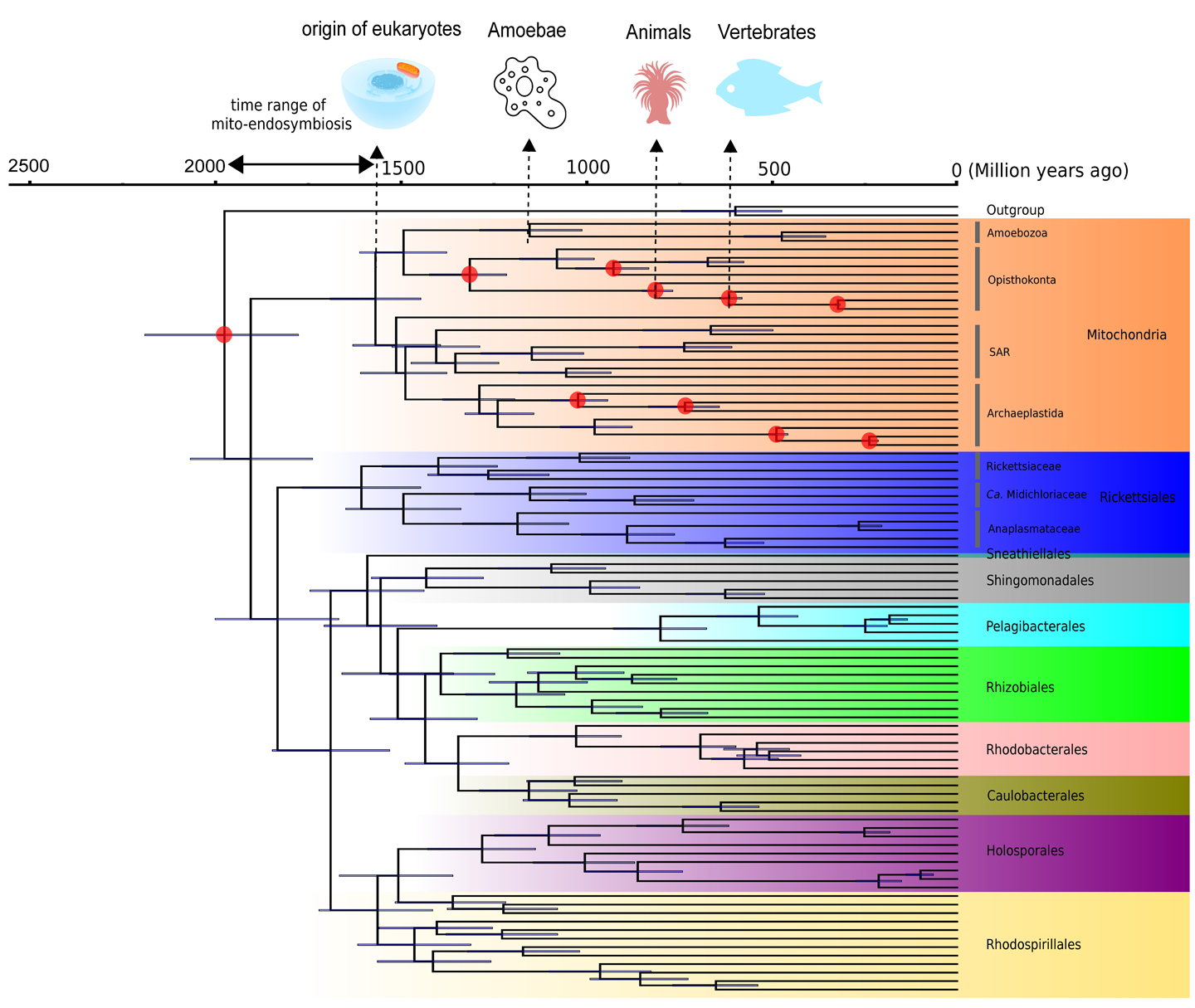Dear readers, With the launch of e-newsletter CUHK in Focus, CUHKUPDates has retired and this site will no longer be updated. To stay abreast of the University’s latest news, please go to https://focus.cuhk.edu.hk. Thank you.
Breakthroughs in Timing Bacterial Evolution
School of Life Sciences team develops new approach to date alphaproteobacteria evolution

Researchers from the School of Life Sciences have developed a new computational strategy to date the origin and diversification of alphaproteobacteria by using information from fossils of eukaryotes. This epitomizes important progress in timing bacterial evolution which may also bring new insights into the emergence of pathogenic bacteria.
Establishing the evolutionary timeline of microbial life is of great importance in understanding the evolution of lifeforms, which is made possible by looking at the fossil records of eukaryotic organisms, ranging from animals to plants, and calibrating molecular clock in turn. This task, however, is very challenging as fossils for these soft-body microorganisms are extremely difficult to preserve.
In a new study conducted by Prof. Luo Haiwei and Dr. Wang Sishuo of the School of Life Sciences, a new approach to date the evolution of alphaproteobacteria has been developed. Alphaproteobacteria are one of the most abundant bacterial groups across the oceans and soils, and they have formed an intimate association with animals and plants, making them a promising system for investigating the timing of bacterial evolution and for understanding important geological, ecological and evolutionary events.
By using the newly developed approach which co-estimates the origin times of both symbiotic bacteria and their eukaryotic hosts, the research team built a phylogenetic tree that shows the evolutionary relationships among alphaproteobacterial groups and mitochondria in the absence of bacteria-containing fossils, successfully circumventing the limitations of traditional methods which are mostly based on indirect evidence for calibration.
‘Calibrating the molecular clock with accurate dating information is one of the most challenging tasks in building a “time-calibrated phylogenetic tree”,’ explained Professor Luo. ‘Our research finding holds promise for dating any phylogenies involving endosymbiosis events. The strategy developed by the research team also opens a new window for understanding the evolution of the microbial tree of life.’
Related research results were recently published in the prestigious scientific journal Nature Communications.